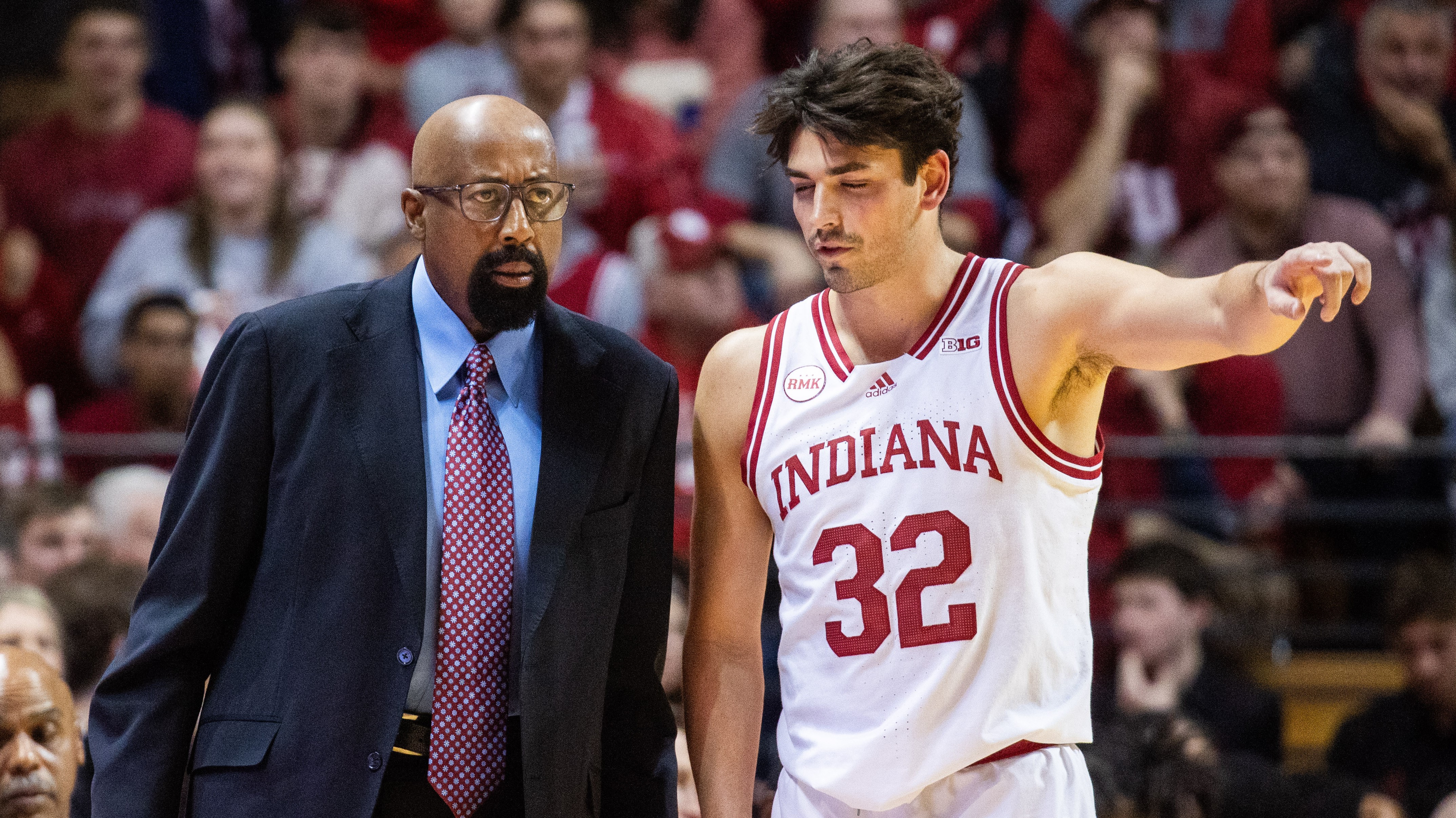Ad Disclosure

Barring an unexpected run in the Big Ten Tournament in a couple weeks, the NCAA Tournament will come this March without representation from Indiana, Michigan and Ohio State.
If that seems almost impossible, it’s because it almost is.
Since the tournament expanded to 64 in 1985, it has happened only twice, when the the trio of Big Ten bellwethers were simultaneously left out in consecutive seasons in 2003-04 and ’04-05. Those were lean years: Ohio State had fired Jim O’Brien after a 14-16 season in ’03-04, transitioning to Thad Matta, who despite guiding the Buckeyes to 20 wins in his debut couldn’t get OSU into the Big Dance; Michigan was in the midst of the ho-hum Tommy Amaker years, when the Wolverines were burst from the bubble in ’04 — a 23-11 overall record was hindered by an 8-8 mark in the conference — then finished sub-.500 the next year; and IU was 2 years removed from its surprise Final Four run, largely limping through the final stages of the Mike Davis era. The Hoosiers finished an even 30-30 from 2003-05.
It all feels eerily similar now.
Ohio State is in a rebuild, having moved on from Chris Holtmann, who after 4 NCAA Tournament appearance in his first 5 years in Columbus is out after back-to-back lackluster seasons. Jake Diebler is the interim coach and he seems to have galvanized the Buckeyes, if only temporarily, with 2 wins in his 3 games at the helm. Ohio sportsbooks aren’t exactly sold on a potential late run.
OSU will seek out a big-time name in the offseason, perhaps Florida Atlantic’s Dusty May or Xavier’s Sean Miller or Alabama’s Nate Oats or someone else. Michigan appears stuck in the mud with Juwan Howard, who was an NCAA Tournament No. 1 seed only 4 years ago, but seems to have lost his way now. The Wolverines will finish this season in the Big Ten cellar.
Soon, Michigan will have to make a decision on the direction of its program, with athletic director Warde Manuel needing to choose whether Howard stays or goes. Indiana AD Scott Dolson will have the same question with Mike Woodson, who after taking the Hoosiers to back-to-back NCAA Tournaments might guide them to a sub-.500 year. Neither decision at Michigan or IU will be an easy one, particularly considering Howard and Woodson are alumni from far better eras of basketball success.
And these are the big boys of Big Ten basketball. Indiana (22), Michigan (17) and Ohio State (14) each rank in the top-20 all-time in number of NCAA Tournament Sweet 16 appearances. Their absences this season have created an upside down basketball landscape in the Big Ten.
No, it’s not surprising to see Purdue and Illinois at the top of the league — those programs have combined for 44 regular-season championships — but others are missing in action. It’s not only IU, OSU and UM, but Michigan State is also only a shell of what it’s been previously under the long and distinguished career of Tom Izzo. The Spartans, who won the Big Ten’s last NCAA Tournament title in 2000, will likely make the NCAA Tournament this season, but not without some nervous moments. It’s been a rare time over the past 25 years that the Spartans have let out a sigh of relief on Selection Sunday, but this will likely be one of them. Maryland, the 2002 NCAA champs (as an ACC member, though), were expected to finish in the top-5 of the Big Ten under 2nd-year coach Kevin Willard but are struggling to get to .500 in league play.
It’s left a void for others to fill, with Northwestern and Nebraska taking steps forward.
For the Wildcats, this season has been a validation of their success a year ago, when Chris Collins guided them to only their 2nd NCAA Tournament appearance ever. They’re likely to be a double-bye in the Big Ten Tournament and a bid to the NCAAs. At Nebraska, Fred Hoiberg’s 5-year tenure had been highlighted by starts and stops, but little else, until this season. The Cornhuskers are also battling for one of those top-4 seeds in the league tourney and are playing their way off the bubble and solidly into the field. Minnesota, which hasn’t made the tourney since 2018-19, is battling for a spot under 3rd-year coach Ben Johnson, but the Golden Gophers likely need to make up some ground in the last 2 weeks of the season to get into NCAA consideration.
But the question for the Big Ten might be when does the trio return to prominence?
The addition of UCLA, USC, Washington and Oregon create a more crowded landscape starting next season, but the Big Ten — at least in basketball — feels like a league that should still be dominated by the name brands. In modern-day college athletics, fixes can come quickly, but only if the right decisions are made; only time will tell if that happens in Bloomington, Columbus and Ann Arbor.
Kyle Charters, a familiar face at Gold & Black, covers Purdue, Indiana and college basketball for Saturday Tradition.